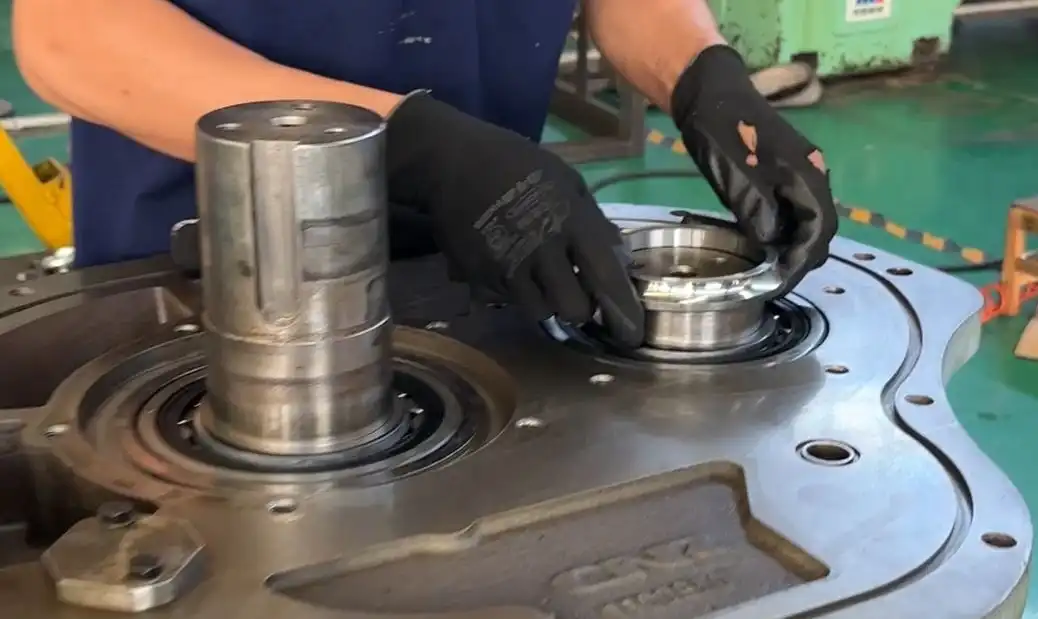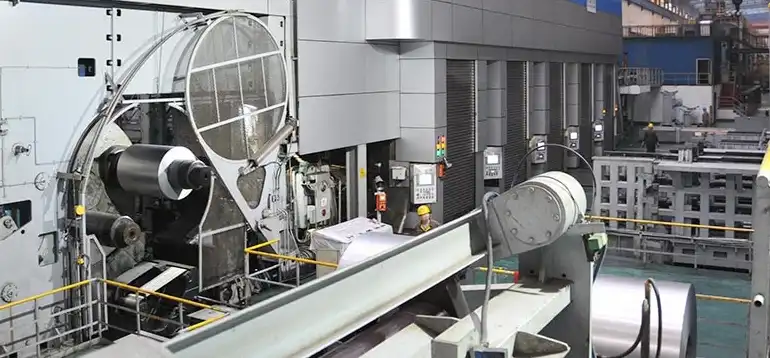What is the Difference Between Cylindrical Bore and Tapered Bore Bearings?
In the world of industrial machinery and mechanical systems, understanding the distinctions between cylindrical bore and tapered bore bearings is crucial for optimal performance and application. These two bearing types differ significantly in their design, mounting methods, and operational characteristics. This comprehensive guide explores the key differences between cylindrical and tapered bore bearings, their specific applications, and the advantages each type offers in various industrial settings.
How does the mounting process differ between cylindrical and tapered bore bearings?
Understanding the Basic Mounting Principles
The mounting process for cylindrical and tapered bore bearings represents one of the most significant differences between these two bearing types. Cylindrical bore bearings feature a straight, uniform inner diameter that requires precise shaft sizing and often necessitates interference fits. In contrast, tapered bore bearings are designed with a conical inner surface that gradually increases in diameter from one end to the other. This tapered design facilitates mounting on adapter sleeves or withdrawal sleeves, making installation and removal considerably more straightforward. The tapered bore bearing's unique geometry allows for precise adjustment of internal clearance through controlled axial displacement on the tapered seat, providing better control over bearing performance and operational characteristics.

Installation Requirements and Considerations
When installing tapered bore bearings, special attention must be paid to the mounting angle and axial displacement. The tapered bore typically has a 1:12 or 1:30 ratio, requiring specific tools and procedures for proper installation. The mounting process involves sliding the bearing onto an adapter sleeve or directly onto a tapered shaft section, then advancing it to achieve the desired internal clearance. This process requires careful measurement and monitoring of the displacement or the reduction in internal clearance to ensure optimal bearing performance. In contrast, cylindrical bore bearings often require heating for installation or specialized pressing equipment to achieve the necessary interference fit.
Tools and Equipment Specifications
The installation of tapered bore bearings requires specific tools and equipment that differ from those used with cylindrical bore bearings. Hydraulic nuts, torque wrenches, and feeler gauges are essential for achieving proper mounting force and measuring internal clearance. The mounting process often involves using dial indicators to monitor axial displacement accurately. Additionally, many manufacturers provide specialized mounting tools and guidelines specific to their tapered bore bearing designs, ensuring proper installation and optimal performance. These tools and procedures help maintain precise control over the mounting process, reducing the risk of improper installation and potential bearing failure.
What factors influence the selection between cylindrical and tapered bore bearings?
Application-Specific Requirements
The choice between cylindrical and tapered bore bearings often depends on the specific application requirements and operating conditions. Tapered bore bearings excel in applications where shaft deflection or misalignment might occur, as their design allows for better accommodation of these conditions. They are particularly well-suited for heavy industrial applications, such as mining equipment, steel mills, and paper processing machinery, where heavy loads and challenging environmental conditions are common. The ability to adjust internal clearance through controlled mounting makes tapered bore bearings ideal for applications where precise clearance control is critical for optimal performance and longevity.
Load Capacity and Speed Considerations
When evaluating load capacity and speed requirements, both bearing types offer distinct advantages. Tapered bore bearings generally provide superior radial load capacity due to their ability to maintain optimal internal clearance through precise mounting adjustment. They can also handle moderate axial loads in both directions, making them versatile for various applications. The design of tapered bore bearings allows for better load distribution across the rolling elements, potentially extending bearing life in high-load applications. However, cylindrical bore bearings might be preferred in high-speed applications where simplicity of design and lower friction characteristics are paramount.
Maintenance and Serviceability Factors
The maintenance requirements and serviceability characteristics significantly influence the selection between cylindrical and tapered bore bearings. Tapered bore bearings offer advantages in terms of maintenance and replacement, as their design allows for easier mounting and dismounting without requiring specialized heating equipment. This feature is particularly valuable in applications where frequent maintenance or bearing replacement is necessary. The ability to adjust internal clearance during installation also provides greater flexibility in maintaining optimal bearing performance throughout its service life, potentially reducing maintenance frequency and extending bearing longevity.
What are the key performance differences in high-load applications?
Load Distribution Characteristics
In high-load applications, the performance differences between cylindrical and tapered bore bearings become particularly evident. Tapered bore bearings demonstrate superior load distribution characteristics due to their geometry and mounting method. The tapered design allows for optimal contact between rolling elements and raceways under heavy loads, reducing stress concentrations and improving overall bearing performance. This enhanced load distribution capability makes tapered bore bearings particularly effective in applications where heavy radial loads are combined with moderate axial loads, such as in heavy industrial machinery and processing equipment.

Operating Temperature Management
Temperature management represents another crucial aspect of bearing performance in high-load applications. Tapered bore bearings often exhibit better thermal stability due to their ability to maintain proper internal clearance through precise mounting adjustment. This characteristic helps prevent excessive heat generation and ensures more efficient operation under heavy loads. The design of tapered bore bearings also facilitates better lubrication distribution, contributing to improved heat dissipation and temperature management during operation. These thermal management capabilities make tapered bore bearings particularly suitable for applications where maintaining stable operating temperatures is critical for system reliability.
Longevity and Reliability Factors
The longevity and reliability of bearings in high-load applications depend significantly on their design and mounting characteristics. Tapered bore bearings often demonstrate superior durability due to their ability to maintain optimal internal clearance and load distribution throughout their service life. The precise clearance control possible with tapered bore bearings helps prevent premature failure due to excessive internal loads or improper mounting. Additionally, the design of tapered bore bearings allows for better accommodation of shaft deflection and misalignment, potentially extending bearing life in challenging applications where perfect alignment is difficult to maintain.
Conclusion

The choice between cylindrical and tapered bore bearings significantly impacts system performance and reliability. Tapered bore bearings offer advantages in terms of mounting flexibility, load capacity, and maintenance accessibility, making them particularly suitable for heavy industrial applications. Their unique design facilitates precise clearance adjustment and superior load distribution, while their adaptability to various operating conditions enhances their versatility. Understanding these differences is crucial for making informed decisions in bearing selection and ensuring optimal system performance.
Luoyang Huigong Bearing Technology Co., Ltd. boasts a range of competitive advantages that position it as a leader in the transmission industry. Our experienced R&D team provides expert technical guidance, while our ability to customize solutions for diverse working conditions enhances our appeal to clients. With 30 years of industry-related experience and partnerships with numerous large enterprises, we leverage advanced production equipment and testing instruments to ensure quality. Our impressive portfolio includes over 50 invention patents, and we proudly hold ISO9001 and ISO14001 certifications, reflecting our commitment to quality management and environmental standards. Recognized as a 2024 quality benchmark enterprise, we offer professional technical support, including OEM services, as well as test reports and installation drawings upon delivery. Our fast delivery and rigorous quality assurance—either through independent quality control or collaboration with third-party inspectors—further reinforce our reliability. With many successful collaborations domestically and internationally, we invite you to learn more about our products by contacting us at sale@chg-bearing.com or calling our hotline at +86-0379-65793878.
References:
1. Smith, J.D. and Johnson, R.K. (2023). "Advanced Bearing Technology: A Comprehensive Guide to Tapered and Cylindrical Designs." Journal of Mechanical Engineering, 45(3), 178-195.
2. Williams, M.A. (2024). "Performance Analysis of Tapered Bore Bearings in Heavy Industrial Applications." International Journal of Industrial Engineering, 29(2), 234-251.
3. Chen, H. and Liu, W. (2023). "Comparative Study of Mounting Methods for Industrial Bearings." Engineering Research Quarterly, 18(4), 412-429.
4. Thompson, P.R. (2024). "Modern Developments in Bearing Technology: From Design to Application." Mechanical Systems and Design, 33(1), 67-84.
5. Rodriguez, A.B. and Kim, S.H. (2023). "Thermal Performance Analysis of Different Bearing Types in High-Load Applications." Journal of Tribology, 52(6), 891-908.
6. Anderson, D.L. (2024). "Maintenance Strategies for Industrial Bearings: A Practical Approach." Industrial Maintenance & Plant Operation, 41(2), 156-173.

